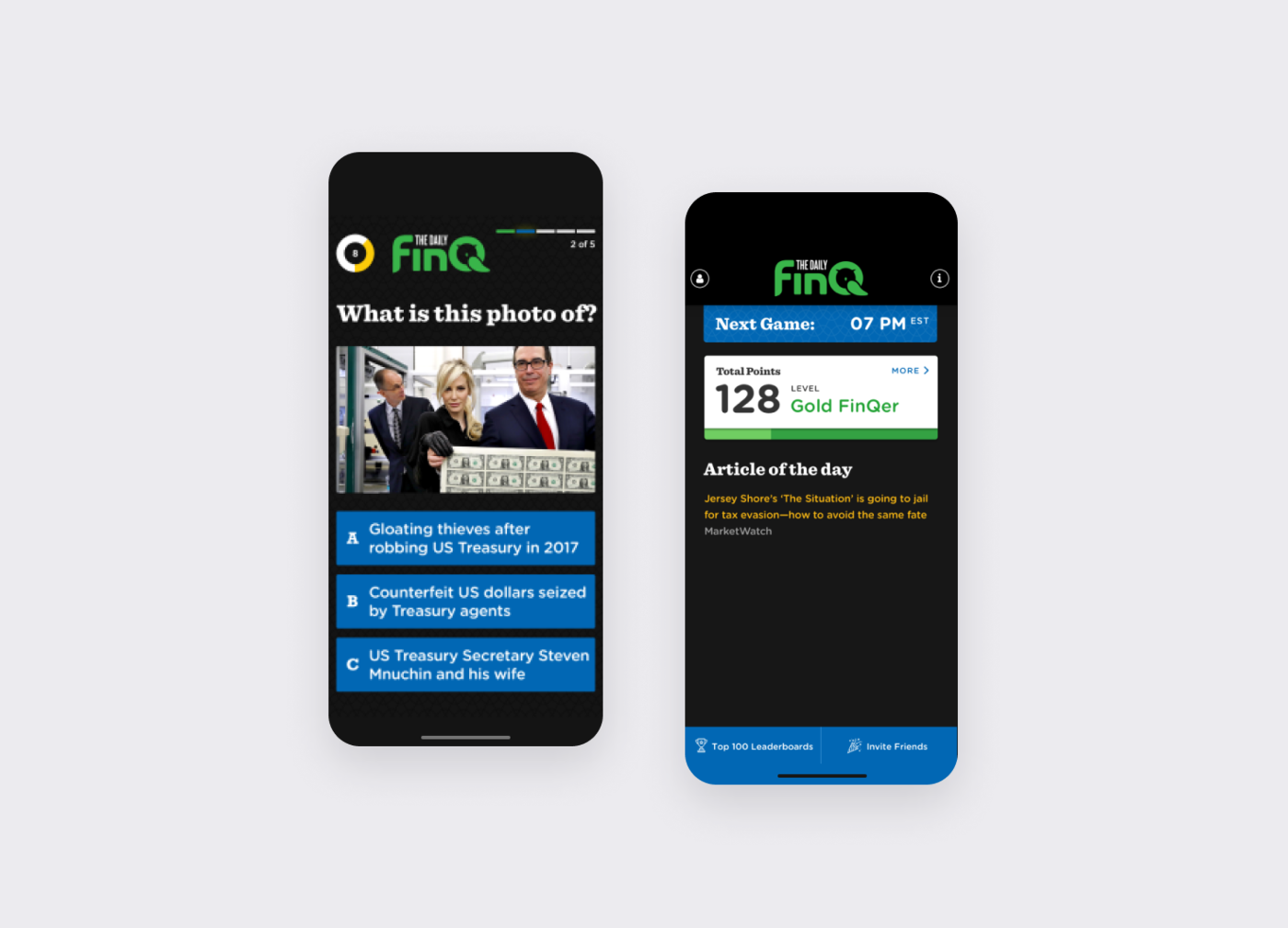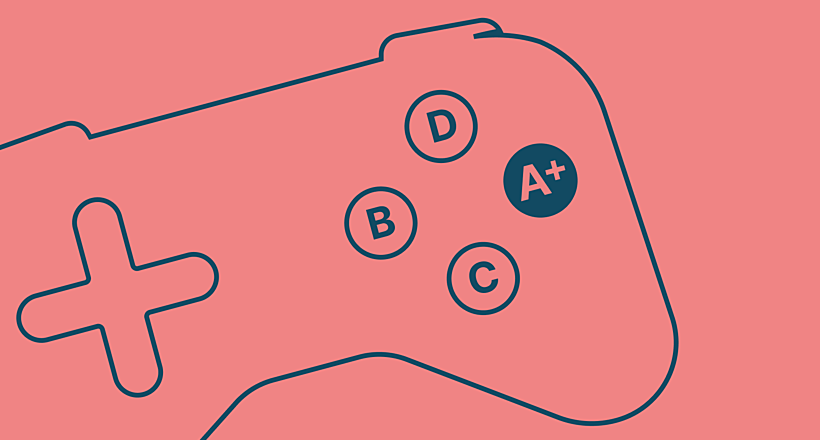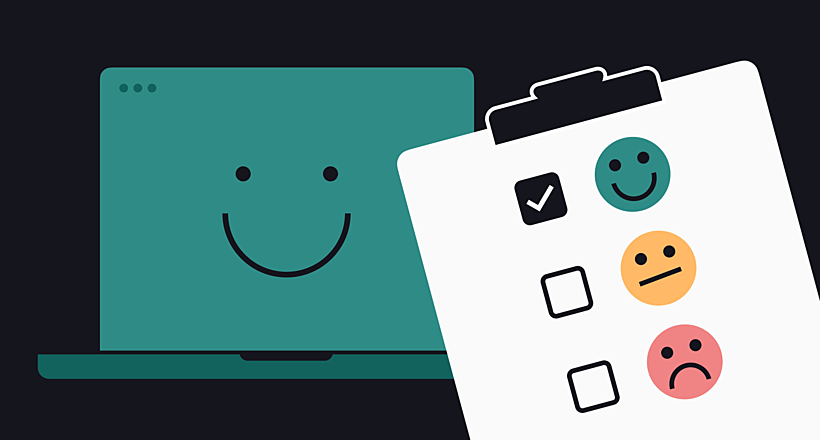
As the competition between educational game creators becomes more and more intense, it’s crucial to provide players with great UX/UI design, follow game market trends, and develop a seamless solution.
Our company has extensive expertise in educational app development. With years of experience in the field, our team of skilled designers and developers have competence with creating innovative and engaging educational apps for various platforms.
If you are wondering about educational online game development, you are in the right place. In this article, we will give tips on how to develop this type of game and provide a step-by-step guide.

Source: MarketsandMarkets
eLearning Game Market Trends
MarketsandMarkets states that the global gamification market is projected to grow from $9.1 billion in 2020 to no less than $30.7 billion by 2025, at a compound annual growth rate (CAGR) of 27.4%.
We’ve selected major trends in eLearning that will dominate the market in 2023 – 2025.
- Gamification becomes an integral part of recruitment and training programs. The COVID-19 pandemic made companies shift to fully online recruitment and training solutions. It brought the need to create flexible and engaging training programs for remote teams. Gamified eLearning modules help employees to understand new processes and receive real-time feedback on their learning progress thanks to game components.
- Human-centered educational game design. User feedback is driving the design of gamification strategies. Standardized gamification systems are becoming a thing of the past. Users are frustrated when they receive content that has nothing to do with their interests, hence the trend for personalized learning pathways in educational games.
- Gamification provides robust data and insights. One of the key benefits of gamified training software is the ability to provide actionable data. It means companies can track the progress of their employees and make any adjustments in the program. Gamification analytics can also support product innovation. For example, Dunkin’ Donuts (one of the world’s largest doughnut chains) created an online game called On Your Mark to help collect customer insights in exchange for Dunkin’ Donuts gift cards.
- Gamification partners with immersive technologies. Artificial intelligence (AI), virtual reality (VR) and mixed reality (MR) are introduced in onboarding and various training activities to fuel engagement. Exxon Mobil, for instance, adopted gamified VR to provide safety training for its employees.

Source: Exxon Mobil
Types of Educational Games
Whether this games are for adults (e.g., corporate games) or kids, they are divided into six types:
- Roleplay games. Learners take on the role of a character, usually the protagonist. The character might be represented as an avatar, or the educational game may be constructed from the learner’s point of view. Role-playing educational games are especially useful in the workplace to support customer service, soft skills training, or empathy development.
- Timed games. Learners must work against the clock to complete a challenge. Playing against a timer can stretch learners, and adds a new dimension to learning tasks. Such games are great in compliance training to boost engagement or where employees have to make quick decisions.
- Collaborative games. Learners must work in teams to complete a challenge with help from others. These games are designed to promote teamwork, and to encourage a single player to seek outside help to finish a game task. In the workplace, collaborative games can support team skills or act as an ice-breaker in an induction program.
- Decision games. Learners choose the most effective course of action or decide how to respond to a given situation. There may be an optimal set of options but there can also be ambiguity with no perfect decision possible. Often, players can replay the game to see what will happen if they make a different decision. Decision games are great for leadership training and other soft skills development.
- Detective games. Learners must explore the game trying to solve puzzles, mysteries, or challenges. They are useful in helping to develop problem-solving skills. It is a good way to teach aspects of compliance where observation is important.
- Competitive games. Learners must compete in teams or as individuals to score points and win the game. It motivates learners, allowing them to compare their performance against others. Such games are useful in situations where workplace learning needs to be completed within a tight deadline or as part of a team-building challenge.
The Key Features of Educational Games
When developing educational games, you should be aware of the key features that make them effective learning tools. Here are some of them:
- Interactivity. These games are designed to be interactive, engaging the learner in a way that traditional teaching methods often struggle to achieve. By providing functionality such as quizzes, puzzles, and simulations, educational games actively involve the learner in the learning process.
- Immediate feedback. Educational games help to receive immediate feedback to the learner which allows them to understand and correct their mistakes in real-time enhancing their learning experience. This can be implemented in the form of scores, progress indicators, or personalized suggestions, encouraging the learner to continuously improve.
- Progress and achievement. Educational games in e-learning help build a sense of progress and achievement when learners can unlock new levels or earn badges and rewards as they progress through the game.These features help motivate learners to stay engaged and keep learning.
Educational Game Development: Tech Stack
When it comes to educational game development, choosing the right tech stack is essential.The tech stack is the combination of programming languages, frameworks, and tools used to build a software application.
In the case of educational games, the tech stack should be chosen based on factors such as the target platform, performance requirements, and scalability. The most commonly used programming languages for creating educational games include C++, C#, and JavaScript. Frameworks like Unity and Unreal Engine provide a robust development environment for developing interactive and visually appealing games.
Educational Game Development: Step-by-Step
We will guide you through our process of educational game design: discovery, game design, development, QA, release, and support. Here are the steps on how to make educational games:
Discovery phase
This step includes:
- Design discovery. This is the phase when we identify user personas, write user stories, and prepare information architecture, user flows and high fidelity wireframes. Our team thinks about the skills a particular educational game should develop: critical thinking, organizing, collaboration, risk management, awareness, and empathy.
- Technical discovery. We prepare documentation with information about general data flow, project architecture, development, QA principles, and technological set.
Educational game design
When you make your own educational games, it’s better to opt for custom design as it offers full freedom in creating the designs and features you want.
Read also: Awesome Game Website Designs Examples
Agente’s educational game design best practices
- Focus on an impressive start. Capture the learner’s attention right from the start. Storytelling will hold the attention of individuals, so you could start off your game with a cutscene (animation or video) that tells users what the character in the game is doing and why.

Source: Dribbble - Allow player representation and decoration. A simple icon or an animated avatar gives a player something to represent their person as they play, which dramatically increases their interest in the content and stake in completion.

Source: Dribbble - Give concise and gratifying feedback. When it comes to eLearning, we need to approach special effects with a little more care. Don’t make effects too flashy. When you create an educational game, respond to player inputs with effects and messaging that are clear and concise.

Source: Dribbble - Make tutorialization interactive. Here are some quick tips:
- Avoid blocks of text. Keep it light and to the point, and if you have a lot to cover in text, cut it up and spread it out over several levels.
- Use visuals instead of text. Replace a paragraph explanation with an arrow or a highlight to point users to their next interaction. Then highlight or animate the next button to press.
- Make your tutorial contextual. Don’t explain to your players that they need to walk, then run, then jump, then crouch, then attack. Dish it out in stages, right at the point they are required to use it.

Source: Dribbble
What you get after the design stage
- UX wireframes — the backbone of your entire project layout. These deliverables allow all stakeholders to agree on where the information will be placed before the educational game developers build the interface out with code.
- Prototype — demonstrates the proper placement of the interface. It gives the customer a complete idea of how the site will look like in the final result.
- High-fidelity UI mockups. They give a realistic and dynamic picture of the product.
Software Development
At this stage, our engineers develop frontend and backend sides and make a product requirements document, which communicates the capabilities that must be included in a product release to the development and testing teams. Some elements must be present in any educational game.
Achievement (progression)
The sense of achievement is reached by the introduction of the following elements:
- Points
- Badges
- Leveling
- Leaderboards
- Progression bars
- Certificates
Game players get satisfaction from level accomplishment and skill development. The progression motivates continued effort. Leaderboards also provide a social status element, as do points and badges.

Source: Dribbble
Rewards
Rewards provide extrinsic motivation and recognition for time, effort, and skills attained. Closely related to achievement, rewards like collectables, bonuses and power-ups can be scheduled into the learning experience. Both fixed and variable reward schedules are popular game mechanics. Rewards can be based on completing a number of actions, or distributed at set intervals.

Source: Dribbble
Story
An adventure setting, a disaster scenario, or a beating the competition narrative all boost learner interest and motivation.
Put the learning experience into a narrative setting. Add characters, conflicts, and resolution to immerse the learner in the storyline.

Source: Dribbble
Time
Timers (counting up total time) and countdown clocks create a sense of urgency. Even a schedule of events can focus the learner's attention to the task at hand.

Source: Dribbble
Personalization
This may include avatar selection, avatar customization, choosing themes, character naming, and interactive conversation.
Use the information from learner input fields. For example, if the learner inputs a nickname into a text field, use the nickname within the environment or narrative.

Source: Dribbble
Micro-interactions
Games provide numerous satisfying moments and micro-interactions: a sound effect, a hover-state animation, or a cut-screen narration. But beware of too much flare!
Provide nuanced environmental reactions to learner actions through subtle animations, easter eggs, sound, and cool transition screens.

Source: Dribbble
For each project, we employ a particular set of technologies to develop custom software that perfectly meets our clients’ requirements. The Agente team follows the agile approach, demonstrating the software after each stage of completion to synchronize watches with the customer or revise something if needed.
QA
Our QA team creates a test plan, goes through every test scenario and provides the test summary to make the educational game work as it was intended. If the product needs tweaking, it’s returned to the development team.
The test strategy is created in advance by the QA team. This document describes the company’s common approach to software testing.
Release
When the QA team and the client are fully satisfied with the product development, it is released to users to see how it behaves. It can be returned to the development team if there are still issues to fix.
The Agente team implements CI/CD pipeline to deliver code changes more frequently and reliably. This approach enables us to focus on meeting business requirements, security, and code quality, because deployment steps are automated.
Support
In the final stage in the development of educational games, we provide support after the release. It includes fixing bugs, resolving queries, developing new features and code updates upon request. Agente guarantees two-month support after the release date depending on the cooperation model.
How Much Does It Cost to Create Your Own Educational Game?
Educational game development costs are influenced by several factors: the scope of work, the complexity of features, the number of specialists involved, the presence of costly elements like animations, etc.
On average, it will take around 2000 hours to create an MVP. The rough calculations for this project look like this:
- Front-end and back-end development: $40 000.
- UI/UX design: $20 000.
- Management: $7 000.
- Testing: $5 000.
Total cost: $72 000.
This is for an MVP version. The complete app with complex features will take about 2500-2600 hours and cost around $85,500 – $90 000.
These figures are not set in stone; the final cost will depend on your creative idea.
Agente Experience
In the time we’ve been in business, we’ve had numerous projects in the eLearning sphere, including digital classroom management systems, corporate microlearning, educational platforms, and games. One such project is The Daily FinQ.
The game helps players to understand the basics of personal finance, as well as investing and borrowing money. So, as one of the best educational game companies we created a fast, fun, free game to improve the knowledge of all things financial.
The game can be played twice daily. Players can accumulate digital points and awards and move up levels by answering finance questions correctly.

Final Thoughts
If you want to build elearning games that will stand out among thousands of others on the market, it’s important to choose the right educational game development partner. Agente has a vast experience in the eLearning sector, including LMS, games, and educational platforms. Drop us a line to make your idea into a robust eLearning solution.
Rate this post!
316 ratings, average ratings is 4.5 out of 5
Frequently asked questions
Whether you represent a private business, a large enterprise or an educational institution, our e-learning platform development services will greatly improve the performance of your company.
How do I get started with educational game development?
To get started with educational game development, it's important to have a clear understanding of the educational objectives you want your game to achieve. This involves identifying the specific concepts or skills you want to teach and how you envision them being integrated into the gameplay. Once you have a solid foundation, it's time to start developing the actual game. This typically involves creating a game design document, outlining the game mechanics, art assets, and levels. From there, you can start building the game using a game development software or platform of your choice.
Are there any legal or copyright considerations when using content in educational games?
When developing educational games, it is important to consider the legal and copyright issues of using content. Especially, it is important if the game uses content that is protected by copyright, like pictures, videos, or music. That’s why it is recommended to obtain the required permissions or licenses before using such content in your educational game.
How do I assess the educational effectiveness of my game?
Assessing the educational effectiveness of a game is important when assessing how it affects learning outcomes. Testing players' knowledge and skills before and after a game is one method of determining how effective a strategy is. Additionally, observing players' engagement and behavior during gameplay can provide valuable insights into the game's effectiveness. Surveys and interviews can also be used to gather players' feedback on their learning experiences.
Related Posts

Develop Custom Corporate Microlearning Platform
Custom microlearning solutions for corporate training: Discover how to develop a tailored platform for efficient and engaging employee learning

24 January 2024
Employee Training Management Software Development in 2024: Features and Cost
Streamline your employee training with cutting-edge software solutions. Explore the features and costs of employee training management software.

LMS gamification in 2024: Benefits, Types, and Examples
Discover how LMS gamification boosts engagement, improves knowledge retention & inspires mastery. Explore types & examples.

How to Design and Redesign an LMS in 2024: Benefits and Use Cases
Step into the future of learning with our guide on designing and redesigning an LMS in 2023. Discover the benefits, explore real-world use cases.

03 January 2024
10 Best Game Website Design Examples: How to Design Yours
Game website design: importance in attracting new players, awesome examples and design tips.

How to Create Online Course Website: A Full Guide
Discover how to build an online course website with our comprehensive guide, offering step-by-step instructions, tips, and best practices for educators.
Let's talk
Is there a challenge your organization or company needs help solving? We’d love to discuss it.

Managing Director, Partner
Andrew Terehin

Thank You!
Your message has been successfully sent.
We will contact you very soon.







